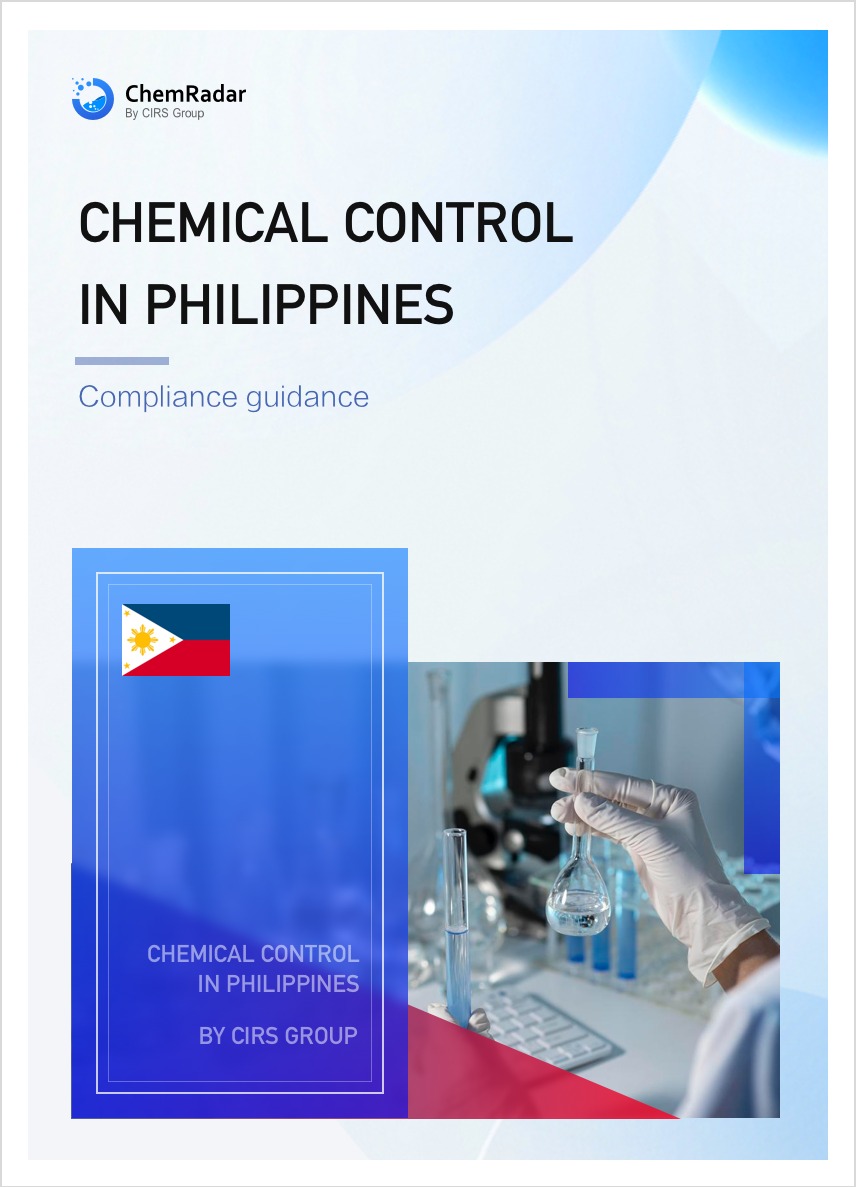2. Determination of New Chemical Substances and Related Obligations
2.1 Determination of New Chemical Substances
In the Philippines, new chemical substances are those not included in the Philippine PICCS (The Philippine Inventory of Chemicals and Chemical Substances).
The Philippine Inventory of Chemicals and Chemical Substances (PICCS) is a list of all existing
chemicals and chemical substances used, sold, distributed, imported, processed, manufactured, stored, exported, treated or transported in the Philippines. The chemicals and chemical substances in the inventory were nominated by the industries themselves.
Manufacturers and importers need not notify and secure clearance from DENR-EMB before they manufacture or import chemicals included in PICCS; provided that these chemicals are not in PCL and not are subject to CCOs. Chemicals and chemical substances not included in PICCS cannot be manufactured or imported unless exemptions to PICCS and the PICCS
Updating Rules.
The following substances are exempt for including in PICCS:
► Non-chemical substances
► Naturally occurring substances
► Mixtures
► Radioactive substances, pesticides, drugs, foodstuffs, and consumer products that are regulated by other laws in the Philippines
► By-products
Besides the exemptions listed, the following are exempt from filing for updating of PICCS:
► Small-quantity chemicals manufactured or distributed (not imported) for market test and research and development in quantities less than 1,000 kg per year
2.2 PICCS Certificate
A PICCS certificate is a document certifying that a substance is indeed listed on PICCS and thus is exempt from PMPIN. Even though PICCS certificate is not a mandatory requirement, the Bureau of Customs or other authorities may request importers to present PICCS certificate before releasing the goods.
If an enterprise obtains a PICCS certificate, it can protect the substance information with CBI when exporting to the Philippines.
2.3 Pre-Manufacture and Pre-Importation Notification (PMPIN)
Manufacturers and importers of a new chemical are required to notify DENR-EMB of
their intent to manufacture or import the new chemical not sooner than 180 days and not later than 90 days. (new substances manufactured or imported with volume(>=1,000kg/y))
There are two kinds PMPIN forms for notification.
PMPIN Abbreviated Form: used when a new chemical to be manufactured or imported is being used with no control in a country with a similar chemical review process as the Philippine, and sufficient information is submitted by notifier that clearly exhibits the chemical will not pose an unreasonable risk.
PMPIN Detailed Form: used when the manufacturer or importer cannot adequately document the safety of the new chemical or when DENR-EMB determines that the information submitted does not contain sufficient documentation to enable DENR-EMB to determine the safety of the new chemical.
After completing PMPIN, the new chemical may be added to the PICCS public version or the PICCS confidential version depending whether when CBI is requested by the proponent in the Notice of Commencement.
The following substances are exempt from PMPIN.
► Chemicals and chemical substances included in PICCS
► Small scale premises
► Small quantity chemicals
► Certain polymers and other substances exempt from PICCS requirements
► Non-isolated intermediates
► Articles
► New chemicals manufactured exclusively for export
2.4 Small Quantity Importation Clearance (SQI)
Small Quantity Importation Clearance (SQI) is required prior to importation of less than 1000kg/y of new substances(pure chemical substance or component chemicals in percentage by weight of a product, mixture, etc.). The following info is required for application of SQI.
► Completed application form and notarized copies
► (M)SDS in ISO11014 or GHS format
► Letter of request for SQI clearance
2.5 Polymer Exemption Certification
For new polymers not listed in PICCS, a natural person or legal person who imports/produces a new polymer under certain conditions may apply for a PMPIN exemption.(Note: Polymers applied for PMPIN exemption will not be listed in PICCS.)
Polymer exemption may be granted if one of the following conditions is met:
► a polymer in which all monomers are listed in PICCS;
► the weight ratio of the new monomer or new reagent of the polymer is less than 2% by weight;
► the two or more monomers with the highest weight ratio in the new polymer are monomers of an existing polymer in PICCS;
► a PLC of low concern.
Definition of PLC
PLC must meet one of the following:
► when the number-average molecular weight of the polymer is greater than 10,000 Da, the content of oligomers with molecular weights less than 500 daltons is less than 2%, and the content of oligomers with molecular weights less than 1,000 daltons is less than 5%;if it is a cationic polymer, the FGEW should be greater than 5,000 da;
► when the number-average molecular weight of the polymer is 1000~10000 Da, the content of oligomers with molecular weights less than 500 daltons is less than 10%, and the content of oligomers with molecular weights less than 1,000 daltons is less than 25%, and the weight percentage of active functional groups does not exceed 2%.
Required materials for polymer exemption:
► Polymer exemption application form.
► Polymer information, such as detailed chemical name, chemical structure, CAS number (if any), and use of the polymer.
► SDS of the polymer or mixture/product containing the polymer.
► CAS numbers and feed ratios of all monomers and reactants of the polymer.
► Relevant experimental reports/data such as GPC/IR to prove that the exemption criteria are met.
► If CBI is applied, an official letter should be provided to explain the reasons.


